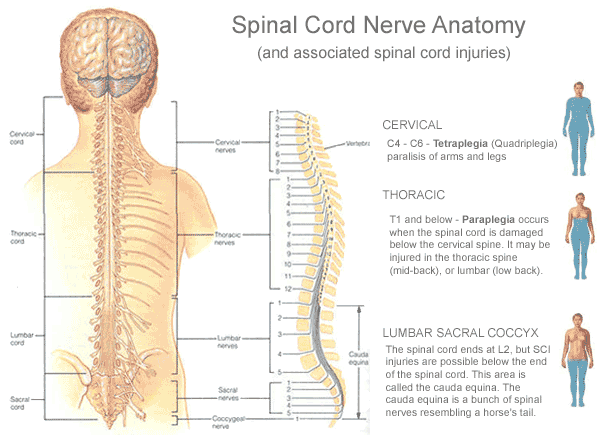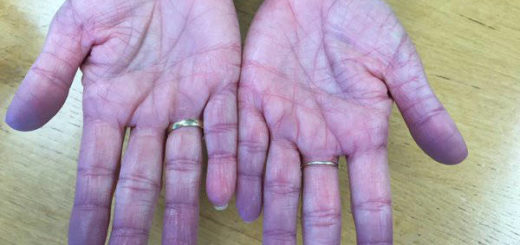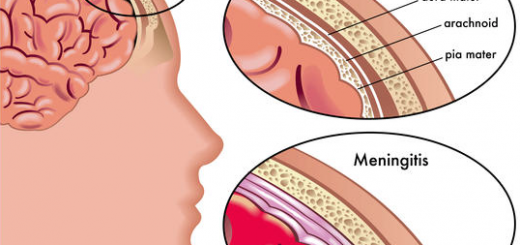When to Suspect a Spinal Injury?
An injury to the head, neck or back may damage the bones (vertebrae) of the spinal column, the discs between them, the supporting ligaments and muscles, or the spinal cord itself.
A spinal injury can be extremely serious. Damage to the spinal cord or the nerves that run from it may lead to paralysis and other complications, such as an inability to breathe unaided.
Remember that a spinal injury may be associated with a head injury, which can also be serious.

What is a Spinal Cord Injury?
A spinal cord injury or SCI occurs when a person suffers damage to the bundle of nerves and nerve fibers that are responsible for sending and receiving signals from the brain.
Spinal cord injuries can occur either from damage to the bones and tissue that surround the spinal cord or direct injury to the spinal cord.
The patient can end up experiencing permanent or temporary changes in:
- Strength
- Movement
- Feeling
- Body functions below the injury site
Many spinal cord injuries happen due to a traumatic and sudden blow to the vertebrae. The broken bones then cause damage to the person’s spinal cord and its nerves.
Those who go through a spinal cord injury can also experience social, emotional, and mental side effects.
Anatomy of the Spinal Cord
The spinal cord has three main components, and they are:
- Cervical (neck)
- Thoracic (chest)
- Lumbar (lower back)
A human being’s spinal cord is covered by layers of tissue known as meninges. The components of these protective tissues are:
- Dura mater: The outer layer that keeps your spinal cord protected against injuries.
- Arachnoid mater: The middle layer which exists between the epidural and subarachnoid space.
- The epidural space falls in the middle of the dura mater and arachnoid mater, and the subarachnoid space exists in the middle of the arachnoid mater and the pia mater.
- Pia mater: This is the name of the inner layer which covers the spinal cord.
Types of Spinal Cord Injury
Spinal cord injuries are of two types, and they are as follows:
- Complete: A complete spinal cord injury is one that leads to complete loss of function or paralysis below the site of the injury. It can either cause paralysis of the body’s lower half or all the four limbs.
- Incomplete: When a spinal cord injury is incomplete, it means that the person still has some feeling or control of movement below the affected region.
Signs and Symptoms of a Spinal Injury
- pain and tenderness in the neck or back
- a ‘step’ in the normally smooth curve of the spine
- weakness or loss of movement or sensation in the legs and sometimes the arms
- abnormal sensation in the limbs – burning, tingling, heaviness or stiffness
- difficulty breathing
- incontinence
Sometimes such symptoms arise as a result of ‘spinal shock’, due to injury to the spinal cord that may heal in time. However, if the spinal cord is severed, the damage is likely to be permanent.
Any movement of the spinal column that could further damage the spinal cord must, therefore, be avoided if there is any possibility of spinal injury.
When to Suspect a Spinal Injury?
- fall from a height
- fall or impact onto the head (such as when diving into a shallow swimming pool)
- falling off a horse or motorcycle
- an injury from a collapsed rugby scrum
- fall that twists or bends the neck, for example landing awkwardly on a trampoline, or while doing gymnastics
- a heavy object falling on the head, neck or back
- a motor vehicle collision, especially a head-on collision
What to Do If a Person is Responsive?
If a person is responsive following a spinal injury, take the following steps:
- Try to calm them down and if they have tight clothes on, loosen them.
- Don’t move them unless they are in danger.
- Make sure the spine, neck, and head of the person remain supported in a neutral position so that they don’t get twisted or bent.
- Ensure an ambulance has been called.
What to Do If a Person is Unresponsive?
If someone who has suffered a spinal injury is unresponsive, proceed with the following steps:
- Don’t move the patient unless they are in immediate danger.
- Support their head and keep it steady so that their spine, neck, and head are in a straight line.
- Ensure the airway is open.
- Check the person’s breathing by placing your ear over their mouth and looking down at their body. Keep looking, listening, and feeling for 10 seconds. In case they are breathing, continue to monitor their breathing and support their head.
- If they are not breathing and are unresponsive, start CPR immediately and ensure the emergency medical services have been contacted.
How is a Spinal Cord Injury Diagnosed and Treated?
In emergency situations, healthcare providers ensure that a spinal cord injury isn’t affecting a person’s heart rate or breathing. They then check if the patient’s nerves are working properly, for which the individual’s motor and sensory functions are checked.
The following are the imaging tests that help in diagnosing a spinal cord injury:
- X-ray: To check for dislocations or broken bones.
- MRI scan: To see the soft tissues or spinal cord.
- CT scan: To check for blood clots, broken bones, or blood vessel damage.
When a person suffers a spinal cord injury, they could require emergency surgery if another area of their body suffers trauma. A surgery can help in addressing spinal cord damage that results from blood clots, broken bones, or tissue damage.
FAQs
What are the signs of a spinal cord injury?
Some of the signs of a spinal cord injury include difficulty in breathing, loss of bladder control, severe pain in the back or neck, and weakness in the legs or arms.
What is one of the major causes of a spinal cord injury?
Motorcycle accidents are often a major cause of spinal cord injuries.
Which are the main parts of the spinal cord?
The main parts of the spinal cord are the cervical, the thoracic, and the lumbar.
What is the best treatment for a spinal cord injury?
The best treatment for a spinal cord injury is surgery.
Can a spinal cord injury be cured?
There is no cure present currently for a spinal cord injury. Still, treatment can aid in preventing irreversible damage and additional injuries.
How do you check for a spinal injury?
Some of the diagnostic tests that are used to check for a spinal injury are X-rays, MRI scans, and CT scans.
Conclusion
If you suspect that someone has suffered a spinal injury, make sure to:
- Keep the patient still.
- Call the emergency medical services.
- Not move the injured person.
- Keep the person comfortable without moving their head or neck.
When someone suffers a spinal cord injury, it can deeply affect their life. This is why it’s essential for them to have a solid support system, which can come from their family members, friends, healthcare providers, and also support groups.
If all these elements work together, they can ensure that the patient’s condition improves, and their quality of life gets better as well.





